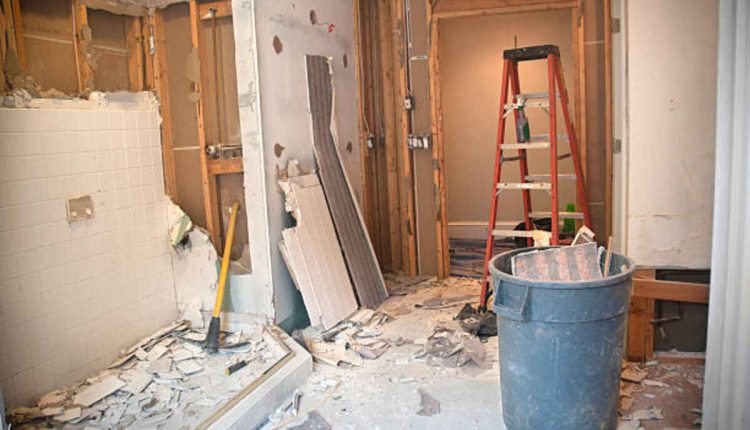During World War II, Navy underwater demolition teams would send combat divers – known as frogmen – ahead of allied landings on enemy beaches to clear and remove obstacles in hazardous and covert missions. Best way to find the Anaheim Demolition Contractor.
Draper Kauffman, widely considered to be the “Father of Naval Combat Demolition,” established a training school known as BUD/S. This is still where Navy SEALs train today!
History
World War II witnessed the introduction of amphibious warfare by way of the Navy’s underwater demolition team, who introduced an entirely new element into amphibious warfare: clearing any obstacles that might block landing craft from arriving. They conducted complete surveys along an island’s coastline and waters before reporting back to their commanders on any potential obstacles they found.
These daring men, commonly referred to as “frogmen,” donned swim trunks and face masks armed with diving equipment for combat operations in treacherous water. Armed only with their diving equipment, these daredevils swam through dangerous waters in dangerous waters to clear debris from beaches in preparation for amphibious landings, destroy Japanese traps such as pointed poles embedded into coral reefs, as well as escape enemy fire in order to make their way safely back towards shore while sometimes even under fire from enemy ships.
LCDR Draper Kauffman, known as the “Father of Naval Combat Demolition,” developed an educational and training regimen for UDTs (Useful Demolition Teams) during World War II to prepare them for battle. These teams proved indispensable assets for our forces on every amphibious invasion during this conflict and proved critical resources in terms of saving lives and valuable military intelligence assets.
UDTs were an essential force during the Korean conflict. Going far beyond beach clearing duties, UDTs conducted nighttime coastal raids that helped cut off North Korea’s supply of food and fuel – missions that demonstrated their skillset and audacity – predecessors of modern Navy SEAL teams, which would continue evolving and expanding through postwar deployments to Vietnam and Korea.
Techniques
Underwater demolition is an integral component of many military and civilian construction projects and requires professionals with both knowledge and experience in planning and execution to complete it effectively. Techniques employed by professional underwater demolition specialists may vary widely depending on the nature of each project but typically consist of multiple methods.
The Navy’s UDTs, commonly referred to as Frogmen, achieved legendary status during World War II by carrying out numerous crucial missions that helped turn the tide of battle. Their unique set of skills enabled them to carry out dangerous, high-risk operations both inland and at sea; their training regimen included physical endurance tests as well as strategic education sessions aimed at creating well-rounded warriors ready to meet any challenge that came their way.
One of the UDTs’ essential duties was preparing beaches for amphibious landings. Combat divers would carefully survey the ocean floor and beaches to make sure there were no artificial or natural obstacles that might obstruct the naval craft’s arrival.
Combat divers would use hand-guided equipment to demolish concrete structures on the seafloor using hand-guided equipment. A diver first drilled a core hole at each section to be destroyed before using a hydraulic splitter from Darda GmbH, Blumberg, to cut apart sections using hydraulic force. A spokesperson from this company noted that this method enabled precise control during demolitions of structures like concrete and other types.
Equipment
Underwater demolition utilizes various tools and equipment to overcome underwater obstacles. They may use underwater hammers for chipping concrete, brooms to sweep debris away, or hydraulic tools that cut reinforced concrete structures. Furthermore, underwater impact wrenches and other unique pieces of equipment allow the demolition team to place explosive charges.
Navy SEALs possess more than just essential tools when it comes to equipment available at their disposal, including diving suits that enable extended stays underwater, as well as tools like the Pirelli Lung for breathing underwater while working.
Early predecessors to today’s Navy SEAL teams were the UDTs (Underwater Demolition Teams) from World War II, commonly referred to as Frogmen due to their pioneering combat diving technique and the crucial roles they played in many major amphibious landings.
Admiral Kelly Turner initiated the United Defense Team (UDTs) during WWII by sending 180 men to Waimanalo Amphibious Training Base on Oahu for intensive specialized training. These men learned how to swim, dive, perform hydrographic reconnaissance and beach demolition – they were even deployed for every amphibious landing across the Pacific! Following World War II, they remained in service and are still remembered today through Navy SEAL programs like SEAL Team 6.
Safety
Demolition diving can be an exhilarating but risky profession, demanding them to navigate murky ocean waters in which they must detect, locate, and render safe or destroy underwater explosives. Demolition divers typically receive advanced training from bomb squads at federal, state, or city law enforcement agencies as well as from Association of Commercial Diving Educators-accredited schools that offer classes in diving safety, off-shore survival training, underwater welding techniques, and underwater explosives.
Blasting through rock can be challenging even on land, but underwater presents additional difficulties. Explosives must be safely contained within their intended areas so as not to damage nearby structures or produce hazardous substances; this is especially critical when conducting blasting near densely populated areas or over waterways with heavy traffic flow.
When creating a Safe Work Method Statement (SWMS) for underwater demolition, it is vital that all potential hazards are identified and controls put in place to mitigate them. Involvement with professionals specializing in this area will also prove invaluable, providing invaluable insights and best practices that ensure your SWMS remains accurate and up-to-date. Furthermore, be mindful of changes to legislation or industry trends that might impact your work activities.
Read also: The Importance Of A Demolition Plan.


